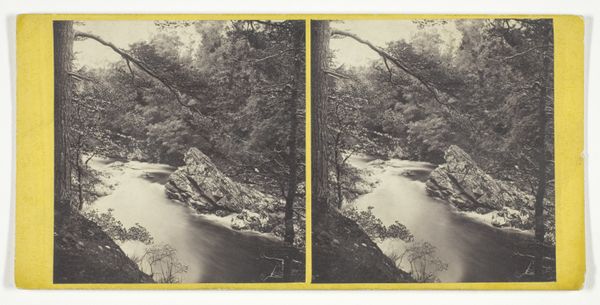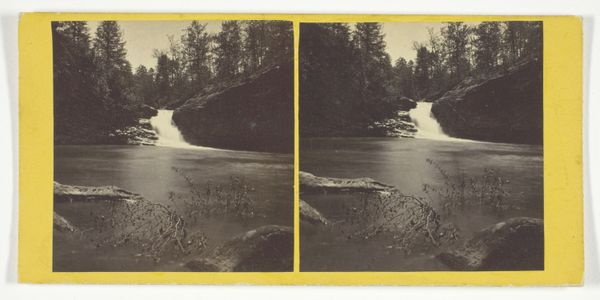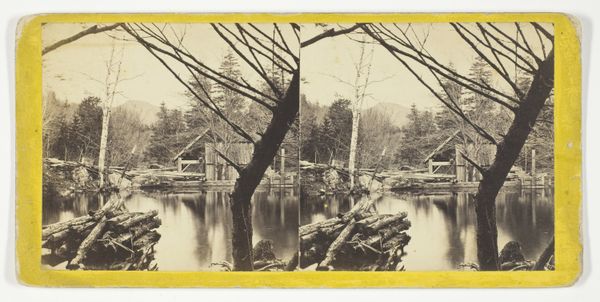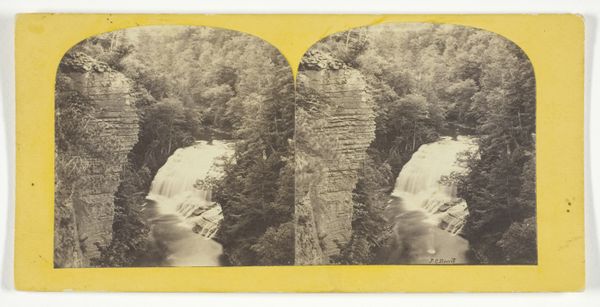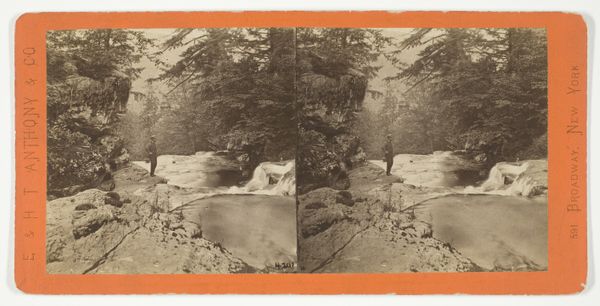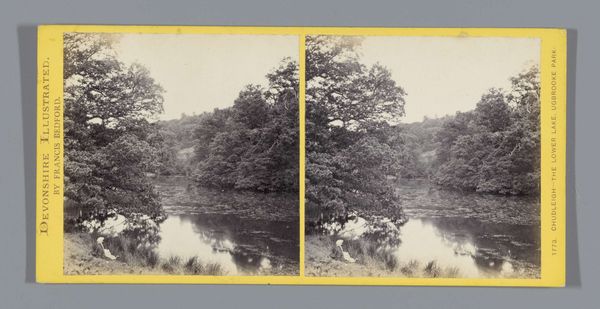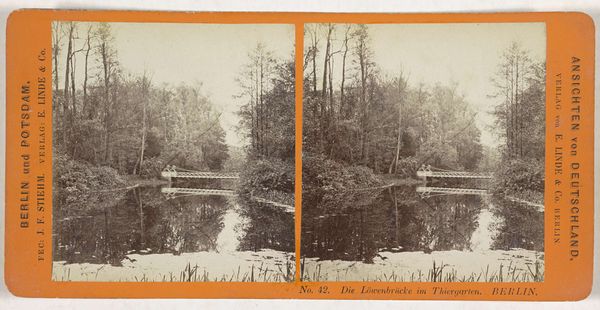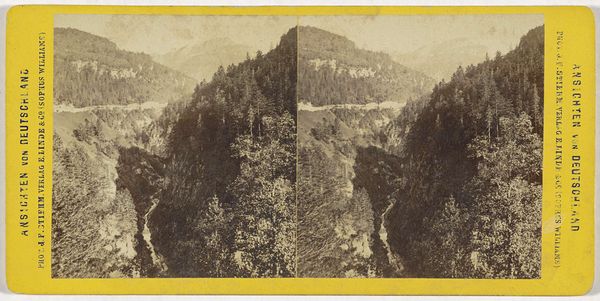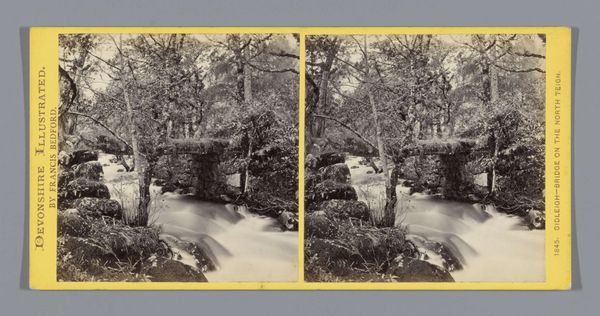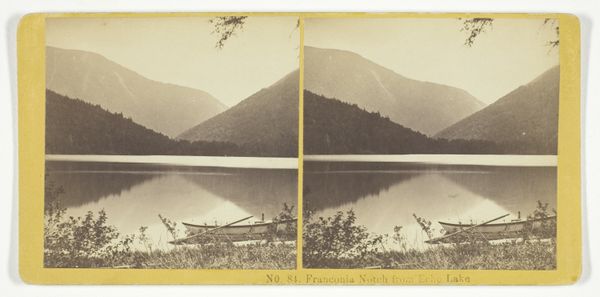
print, photography
#
pictorialism
# print
#
landscape
#
photography
#
coloured pencil
Dimensions: 7.5 × 7 cm (each image); 8.4 × 17.4 cm (card)
Copyright: Public Domain
Editor: So, this is "The Rock called \"Dovedale Church,\" In the distance," created by W. Woodward. It’s an undated photograph presented as a stereograph. It’s lovely; the water seems to stretch out forever, and there’s almost a dreamlike quality to the landscape. What draws your eye when you look at this print? Curator: Immediately, I’m struck by how the photographer uses this stereograph to invite the viewer into a mediated experience of nature. Note how the mirroring subtly emphasizes a division, not just of space but almost of perception. The "church" rock, almost a vestige, becomes symbolic of the enduring, yet increasingly distant, natural world. What cultural anxieties do you think this evokes, especially given the time period’s rapid industrialization? Editor: That's interesting, a feeling of something being lost. I hadn't considered that. So the stereograph isn’t just a novelty, it’s like...a lament? Curator: Precisely! Look closer. The soft focus, characteristic of pictorialism, further romanticizes the scene, obscuring harsh realities. Do you see how this blurring could represent a kind of selective memory, a longing for a perhaps idealized past? The dual image is also significant; a duplication implies that the natural world isn't directly experienced, but constantly filtered and re-presented. Does that reading resonate? Editor: Definitely! It makes me think about how even then, people were aware of humanity's impact on the landscape. The two viewpoints force us to consider our role in shaping the image, and by extension, the environment. I didn't appreciate all those layers at first glance. Curator: Indeed, images, particularly those crafted with such deliberate artistry, hold echoes of cultural memory and anxieties far beyond their immediate subject. Hopefully now you see how the duplication works almost like a hall of mirrors? What final thoughts come to mind? Editor: I’m walking away seeing the photograph as more than a pretty picture; it’s a symbol of a changing world, viewed through a lens of nostalgia. It gives me a lot to think about, particularly relating to pictorialism's aesthetic manipulation.
Comments
No comments
Be the first to comment and join the conversation on the ultimate creative platform.

